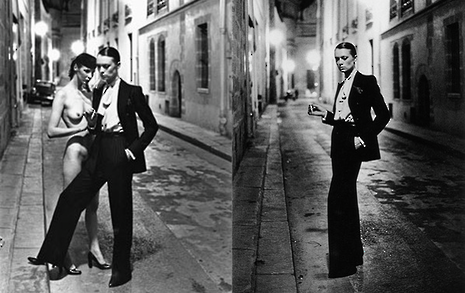Are you what you wear?
With what you wear to Wednesday Cindies unlikely to be your outfit of choice when you roll into lectures, Ellie Mullet explores the way in which what we wear dictates who we identify as.

If clothes were still just a way to protect our modesty and retain warmth, there would be no need to own any more than a couple of functional but uninteresting garments. Of course, the fact most of us now own a wardrobe well-stocked with outfits for every occasion points to a suggestion that clothes are no longer an answer to necessity, but rather a visual projection of your inner personality. What you wear is who you are, or at least who you would like to be, and your stylistic choices are one of the most influential ways to define yourself, and how others think of you.
“We often dress to impress others just as much as we try to satisfy ourselves.”
Wearing a sparkly dress or a pair of brogues doesn’t fundamentally change you as a person, but certain types of attire do have the power to alter your mindset. You can do this yourself, by wearing an item which you know makes you feel confident in, but rules can also be imposed to try and enforce conformity through clothing. Trainers and jeans are banned in up-market clubs, not only because a casual dress code makes a venue seem less prestigious, but it has also been thought that unreasonable behaviour is more likely to erupt whilst dressed in regular clothing. Additionally, by wearing a uniform whilst at school or in certain occupations, individuals define themselves as representatives of their respective institution, and are therefore reminded of their consequent obligations. Sartorial liberation can be repressed in a bid to define order.

Even when we do have the liberty to dress as we please, given the human race is the most superficial of all, and personal style is a key contributor to the all important first impression, we often dress to impress others just as much as we try to satisfy ourselves. The smarter a candidate dresses for a job interview, the more likely the employer is to consider them as a professional and reliable individual, just as the more eclectic the style of a student is, the more likely they are to be considered as edgy by their peers. I once dyed my hair red because I wanted people to think I could channel the effortlessly cool vibes of Florence Welch. What I actually channelled, however, was a first impression of someone who desperately wanted to be cool, but in reality was falling far short of the mark. We all want to be accepted for who we are, but sometimes we feel we have to use personal style to distort the truth if we are to make a bold impression on others.
Look back on your own sartorial history, and there’s guaranteed to be examples of fashion fads which define certain stages of your life. A pair of red boots which I could only bring myself to part with once they were almost falling apart, a T-shirt featuring different cat breeds from around the world, and a vintage shirt that my mum despises: all have earned their place in the wardrobe of iconic past personal attire. My most recent investment is a pink fur coat, and although it is rather ridiculous by most standards, I hope it is defining of someone who finally feels ready to part with their fashion inhibitions.
For anyone remotely fashion conscious, personal style is an integral part of our individual identities. It can be used for liberation, exploited for repressing certain characteristics, or deployed to impress others. Using style to define yourself takes great confidence, but the expressional opportunities presented to us by clothing should never be ignored.
 News / Cambridge academics stand out in King’s 2026 Honours List2 January 2026
News / Cambridge academics stand out in King’s 2026 Honours List2 January 2026 Interviews / You don’t need to peak at Cambridge, says Robin Harding31 December 2025
Interviews / You don’t need to peak at Cambridge, says Robin Harding31 December 2025 Comment / What happened to men at Cambridge?31 December 2025
Comment / What happened to men at Cambridge?31 December 2025 Features / “It’s a momentary expression of rage”: reforming democracy from Cambridge4 January 2026
Features / “It’s a momentary expression of rage”: reforming democracy from Cambridge4 January 2026 News / Varsity’s biggest stories of 202531 December 2025
News / Varsity’s biggest stories of 202531 December 2025









